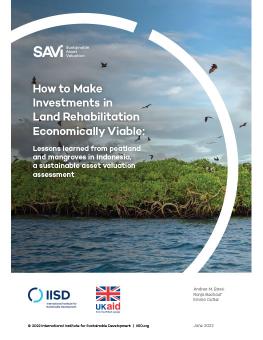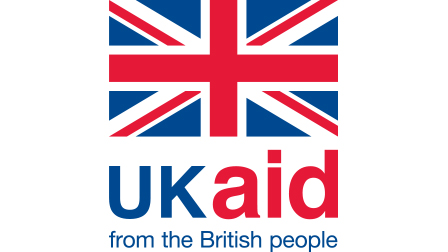
How to Make Investments in Land Rehabilitation Economically Viable
Lessons learned from peatland and mangroves in Indonesia, a sustainable asset valuation assessment
This report presents the results of a Sustainable Asset Valuation (SAVi) assessment for peatland and mangrove restoration in Indonesia. The SAVi assessment uses system dynamics modelling and financial analysis to analyze restoration options for the Katingan peatlands and Belitung mangroves. The study also quantifies the societal benefits and costs of several policy, land-use, and climate scenarios.
-
Our #SAVi assessment shows investing in nature to restore peatlands and mangroves in Indonesia provides a cost-effective way to address climate change and support communities.
-
Ecosystem restoration is an important part of climate change mitigation and adaptation. Both peatlands and mangroves store large amounts of carbon and increase resilience to extreme events.
-
Money matters: To make land rehabilitation lasting and more economically viable, local communities need an additional source of income (like tourism). If not, they may turn to environmentally damaging activities (like plantations and mining) which have less societal benefit than sustainable land management.
Indonesia's commitments to reducing greenhouse gas emissions include efforts to restore 2 million hectares of degraded peatland by 2030 and to restore and better manage mangrove ecosystems. Ecosystem restoration is an important part of climate change mitigation and adaptation. Both peatlands and mangroves store large amounts of carbon and increase resilience to extreme events.
The results of the SAVi assessment presented in this report highlight the social, economic, and environmental value of peatland and mangrove ecosystems. Our results show that sustainable management has high societal value under all simulated climate scenarios. Investing in nature to restore peatlands and mangroves in our study locations provides a cost-effective way to address climate change and support communities. These results provide insight into how similar restoration projects could be done in other locations. They also show that impacts on the local community are critical for success.
Participating experts
Funded by
You might also be interested in
COP 29 Outcome Moves Needle on Finance
In the last hours of negotiations, concerted pressure from the most vulnerable developing countries resulted in an improved outcome on the finance target, with a decision to set a goal of at least USD 300 billion per year by 2035 for developing countries to advance their climate action.
A Sustainable Asset Valuation of a Road Infrastructure Project in Queensland, Australia
This report describes how road authorities can expand traditional cost-benefit analysis for road betterment projects.
How Can Indonesia Foster Sustainable Infrastructure Solutions that Deliver Low-Carbon Development and Bring Additional Benefits?
The policy paper analyzes how Indonesia can foster sustainable infrastructure that delivers low-carbon development and bring additional benefits.
Sustainability Assessment of an Onshore Wind Portfolio in Germany
The assessment integrates environmental, social, and economic costs and benefits into an asset valuation to improve the transparency of the wind asset's impacts on the environment and important stakeholders. It also evaluates the asset's financial resilience to climate change risks.
